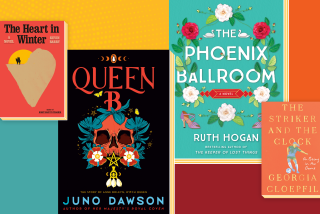Talk About Rumors
Cole Porter’s “Just One of Those Things” laments an affair that was “too hot not to cool down.” These days, Talk magazine seems to be suffering the same fate.
Last summer, Talk was white-hot news, from coverage of the magazine’s launch party on New York’s Liberty Island to its controversial cover story on Hillary Rodham Clinton. Talk was news long before the first issue had its premiere in August. Talk about Talk began in 1998, when editor in chief Tina Brown resigned from the New Yorker and announced plans to create a new publishing venture with Miramax Films.
Now, after four issues, the affair has chilled. One Boston Globe critic is calling the magazine “already failed.” Another, in the New York Press, wrote that “the closure of Talk is no longer a question of if but when. . . .”
Talk, it seems, may be a victim of its own fabulous buzz.
“A great man once said, ‘Nothing brings a bad product [to market] faster than a good promotion.’ And they had the best promotion in the world,” said Samir Husni, a journalism professor at the University of Mississippi and a magazine expert.
“Everybody talked about the first issue of Talk,” he said. “Then everybody started talking about Talk itself. That’s dangerous, when people start talking about what’s happening in the halls of the magazine rather than what’s in the magazine itself.”
*
Media observers have eagerly cataloged the staffers who have left in recent months, including managing editor Paul Lalli, production director David Randall White, features editor Lisa Chase and editor at large Walter Hodgman. Perhaps the most talked-about departure involved Brown’s right-hand man and executive editor, David Kuhn, who followed Brown from Vanity Fair to the New Yorker to Talk. Kuhn left soon after Brown hired Bob Wallace (Rolling Stone, St. Martin’s Press, ABC News) to head its editorial team, for a job with Planet Content, a venture of Brill’s Content.
Talk’s critics say that after the fireworks of the Clinton story, in which the first lady discussed her husband’s affair with Monica Lewinsky, the celebrity cover stories have fizzled. Subsequent covers have featured Elizabeth Taylor, Arnold Schwarzenegger and, in the current December-January, issue, Robin Williams. Revelations have been few: Taylor talked about her bizarre buddy, Michael Jackson; Schwarzenegger discussed running for office; and Williams recalls his bouts with booze and drugs.
“I think they need another big bang,” said Steven Cohn, editor in chief of the weekly Media Industry Newsletter. “I think (Brown) wants to hit the hot button every month. The Hillary thing was a great coup. . . . The expectations are great, but the reality said otherwise.”
Eric Effron, editor of Brill’s Content, said start-up magazines tend to be targets for all kinds of negativity.”
“We’re a start-up ourselves. There’s always going to be--with any start-up, especially with a high-profile one like Talk--a big buildup and then the carping. . . . It’s a very crowded magazine market, and I think it’s difficult to distinguish yourself, and it takes time.”
Many believe the magazine is confusing, with a jumble of story lengths and wildly different content.
“Some pages, you think you’re in a fashion magazine,” Effron said. “Some pages, you think you’re in the New Yorker or Vanity Fair.”
*
Wallace, who has been at Talk for three weeks, said changes are certain, but “what we can expect is an evolution, not a revolution.”
In terms of content, Wallace said, “what we want to do is be a general-interest magazine about ideas and culture.”
Wallace plans to streamline the magazine by establishing a “feature well” of main articles and “putting things in places where readers know they can always find them.”
The cover, styled after European magazines such as Stern, has been criticized as too dark and overly busy. Wallace plans to go with a single cover image, at least occasionally.
The current design “doesn’t give me a lot of room for the kind of headline treatment that signals to the reader that there are a lot of other things in this magazine--a lot of good investigative reporting, Washington coverage, good coverage of arts and books,” Wallace said.
*
But it seemed that the images, rather than the stories, and Talk’s ties with Miramax generated the most criticism. Talk was blasted for its almost blatant promotion of Miramax stars (among them, Gwyneth Paltrow and Williams, whose “Bicentennial Man” is a product of the Walt Disney Co., of which Miramax is a division).
This “synergy” policy backfired recently with a piece on Unabomber Ted Kaczynski, written by Stephen Dubner. Disney apparently was working with Kaczynski’s brother, David, to get his story, and the company encouraged Talk to depict David in a more flattering light than Dubner had intended. He bristled and sold the piece to Time magazine.
Wallace said Talk sold $19 million in ads for the first four issues and has a subscriber rate base of 500,000. “If you look back at other start-ups--Allure, Martha Stewart Living and Fast Company--none of them achieved over $4.5 million in ad sales in their first year,” he said.
More to Read
The biggest entertainment stories
Get our big stories about Hollywood, film, television, music, arts, culture and more right in your inbox as soon as they publish.
You may occasionally receive promotional content from the Los Angeles Times.






